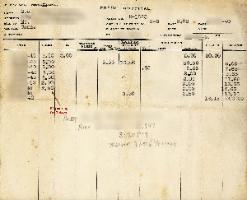| New Orleans Hospitals: Info & Vintage Images Page 1 |
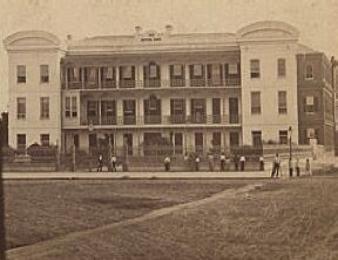
| Charity Hospital Right: Charity Hospital's 3rd building, constructed in 1832; replaced in 1936. In 1735, Jean Louis, a French seaman who built boats in New Orleans, bequeathed his holdings to the founding and maintenance of Charity, a hospital for the indigent sick of the colony of New Orleans. Charity Hospital opened its doors on March 31, 1736. Until the levee failure's floods closed its doors in 2005, it was the second oldest continuing public hospital in the U.S., the oldest being Bellevue in New York, which opened only 1 1/2 months earlier. |
| Newly constructed Charity Hospital complex (to the right and rear of picture), 1939; this facility remained in use until the levee failures' floods shut it down in 2005. ~~~~~ In memory of the seaman who funded Charity, an inscription on the Seal of Louisiana, which used to hang in the lobby, read: "In this harbor weary sea-worn ships drop anchor and new launched vessels start their outward trips. WIthin these walls, life begins and ends." More vintage Charity photos here. |
| Old Charity Hospital about to be demolished to build the new building, 1936; sign reads that the new hospital will be constructed by PWA. |
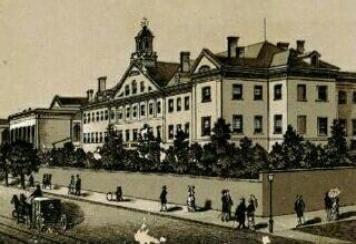

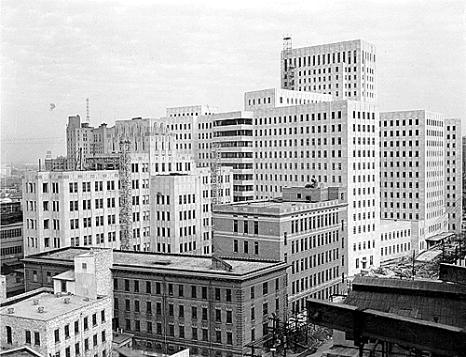
| Hotel Dieu, date unknown |
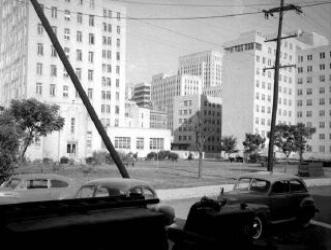
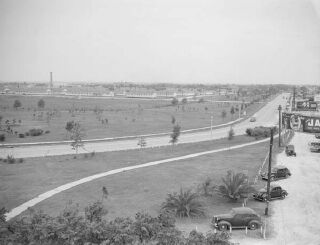
| In the distance, LaGarde General Hospital, Army base at the Lakefront, ca 1941. |
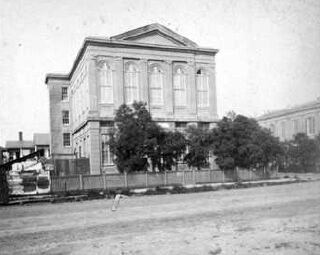
| School of Medicine |
| Touro Infirmary, ca 1910; founded in 1852, Touro is the city's oldest operating private hospital. It was named after New Orleans' philanthropist, Judah Touro. Two more Touro photos below. |

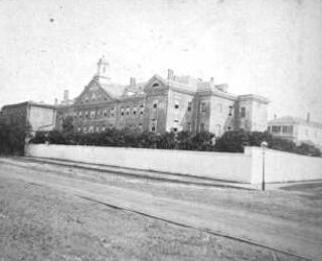
| Old Charity Hospital |

| Old Charity, Male Department |
| United States Marine Hospital, 1911 |
| Veterans Administration Hospital, 1940's |
| Marine Hospital, architect's sketch, 1856 |
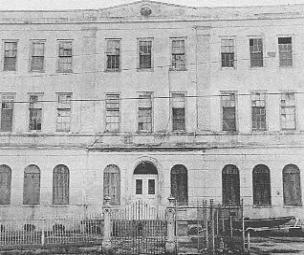
| Demolition of old Charity begins, 1936. |
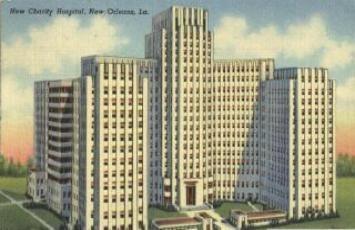
| "New" Charity Hospital, 1939. |
| 1911 postcard above reads: "For treatment of American and foreign sailors; sailors of this country are not charged, but those of foreign countries are charged $1 a day." |
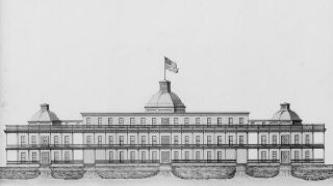
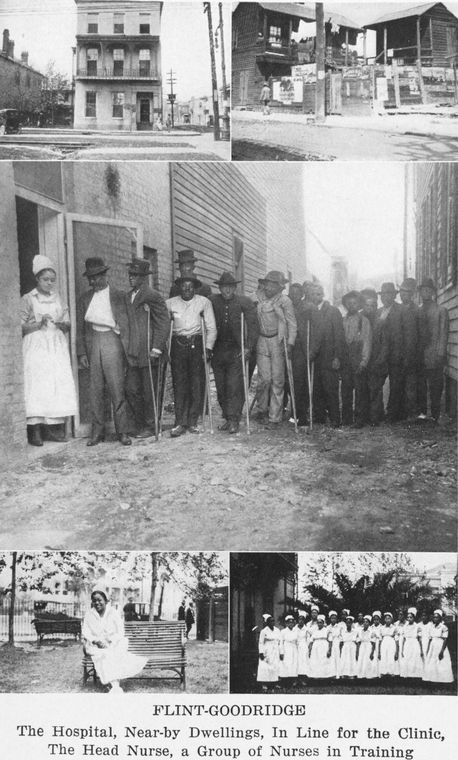
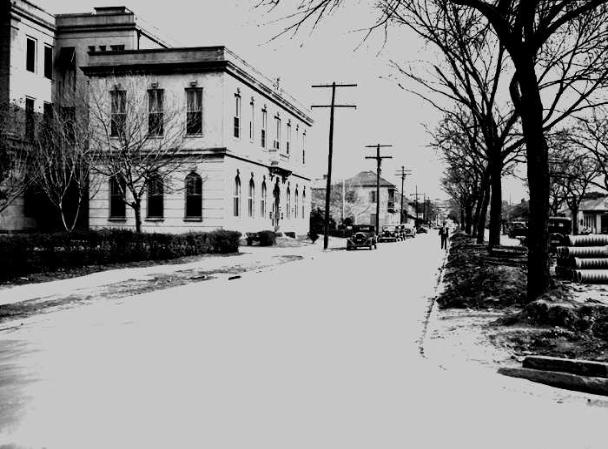
| Left and below: the old French Hospital The French Hospital on Orleans Street was built in the 1860's and operated by the Societe Francaise de Bienfaisance et d'Assistance Mutuelle de la Nouvelle-Orleans. Lee Harvey Oswald, the man who assassinated Pres. John Kennedy, was born in this hospital. It closed its doors in 1951 and the building was used to house various offices, including The Knights of St. Peter Claver. It was, also, used as headquarters for many civil rights activists in the 1960s. It was torn down in 1986. |
| Flint-Goodrich Hospital, was operated by the Methodist Church and Dillard University from 1911 - 1983. Before approximately 1960, African American doctors were allowed to practice only at Flint-Goodrich and were barred from membership in the Orleans Parish Medical Society. New Orleans' first three African American mayors were born at Flint-Goodrich Hospital. |
| Following is a list of some of the hospitals that were open in New Orleans in 1930: Breaux Memorial Hospital; Charity Hospital; Corinne Casanas Memorial Hospital; Delgade Memorial Hospital; Eye, Ear, Nose and Throat Hospital; Flint Goodrich Hospital; French Hospital; Hotel Dieu Hospital; Illinois Central Railroad Hospital; Lepers Home (Isolation Hospital); Maison Hospitaliere; New Orleans Hospital for Mental Disease; Richard Milliken Memorial Hospital; Soniat Leonce Memorial Mercy Hospital; Southern Baptist Hospital; St. Rita's Surgical Infirmary; Touro Infirmary; U. S. Marine Hospital. A visitor to the site asked about DePaul Sanitarium, located uptown on Magazine Street. According to architectural plans I found online, it was constructed in 1938. I know that it was open until the levee failures and, as far as I know, it remains open. Another visitor mentioned D'Ingania Hospital (not sure of the spelling) on St. Claude Avenue. This hospital later moved a block away and become St. Claude Hospital and, eventually, St. Claude Medical Center. |

| Fire destroyed the first 2 Charities. This building (above and left) was used from 1832-1936. Those years produced some colorful history, including the story of the "dueling doctors," Dr. John Foster and Dr. Samuel Choppin. Dr. Choppin was called to take care of one of his students, a severely wounded medical student who'd been shot by a law student in a melee at a Carnival Ball. As the house surgeon, Dr. Foster was assigned to treat the young man. But, Dr. Choppin insisted on treating his student. After ordering a nurse to discard Choppin's prescription for the patient, Dr. Foster encountered Dr. Choppin making rounds. They began to shout and had a fist fight at the dying student's bedside. Soon thereafter, the doctors dueled with shotguns in the hospital's yard. They both missed and the matter was ended. |
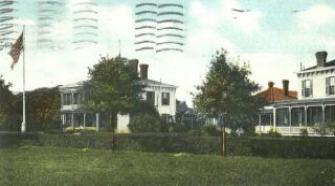
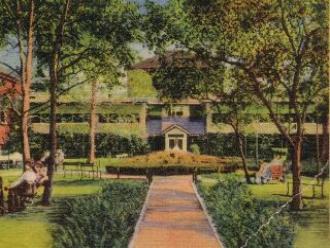
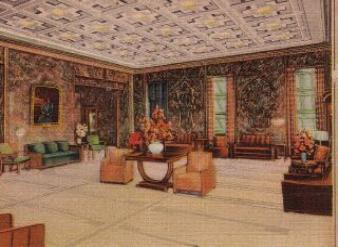
| Touro Infirmary: Left, front entrance to the hospital; right: main lobby, ca. 1920's. |
| ~ ~ ~ ~ ~ ~ |
| ~ ~ ~ ~ ~ ~ |
| ~ ~ ~ ~ ~ ~ |

| ~ ~ ~ ~ ~ ~ |
| ~ ~ ~ ~ ~ ~ |
| Baptist Hospital (later renamed Memorial) on Napoleon Avenue, above, 1944; below, left, 1949; below, right, 1925. Infamous for, among other things, being the place of your webhostess' birth. |
| ~ ~ ~ ~ ~ ~ |
| 1951 |
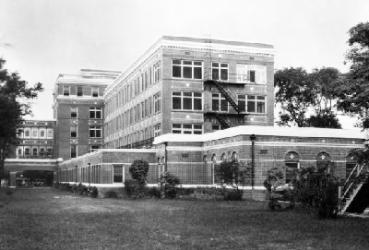
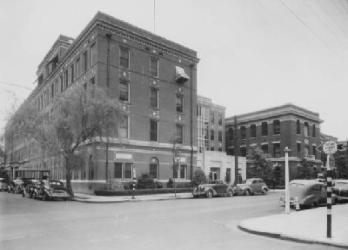
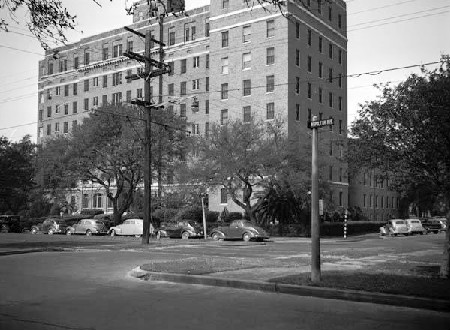
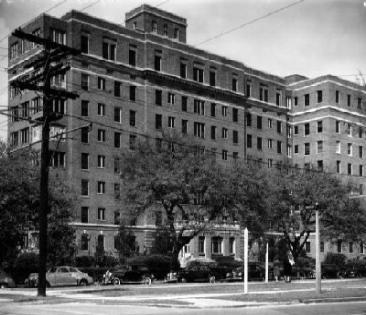
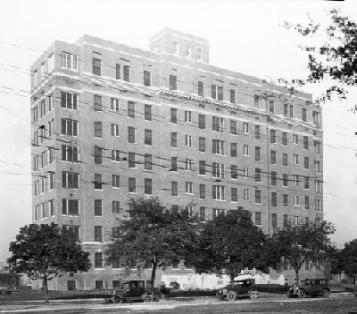
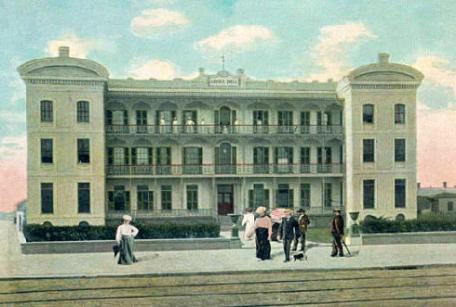
| Hotel Dieu Hospital, ca 1868 Hotel Dieu Hospital, ca 1875 Founded in the 1850's by the Daughters of Charity of St. Vincent de Paul, the name means "God's hostel" but has been used in France to mean "hospital" since early Christian times. Hotel Dieu was the only private hospital to remain open during the Civil War. In 1913, it was the first hospital in the country to air condition its surgical suites. Research at this hospital was responsible for the drug used to treat meningitis. Hotel Dieu was sold to the state in 1992 and renamed University Hospital. |
| ~ ~ ~ ~ ~ ~ |
| 1940 hospital bill from the French Hospital; thanks to Victor, who writes that his Mom's doctor didn't get to do the delivery, because he underestimated the speed of Victor's arrival and thought that he had time for a quick visit to the racetrack! |
| Click on image to see a larger version. |
